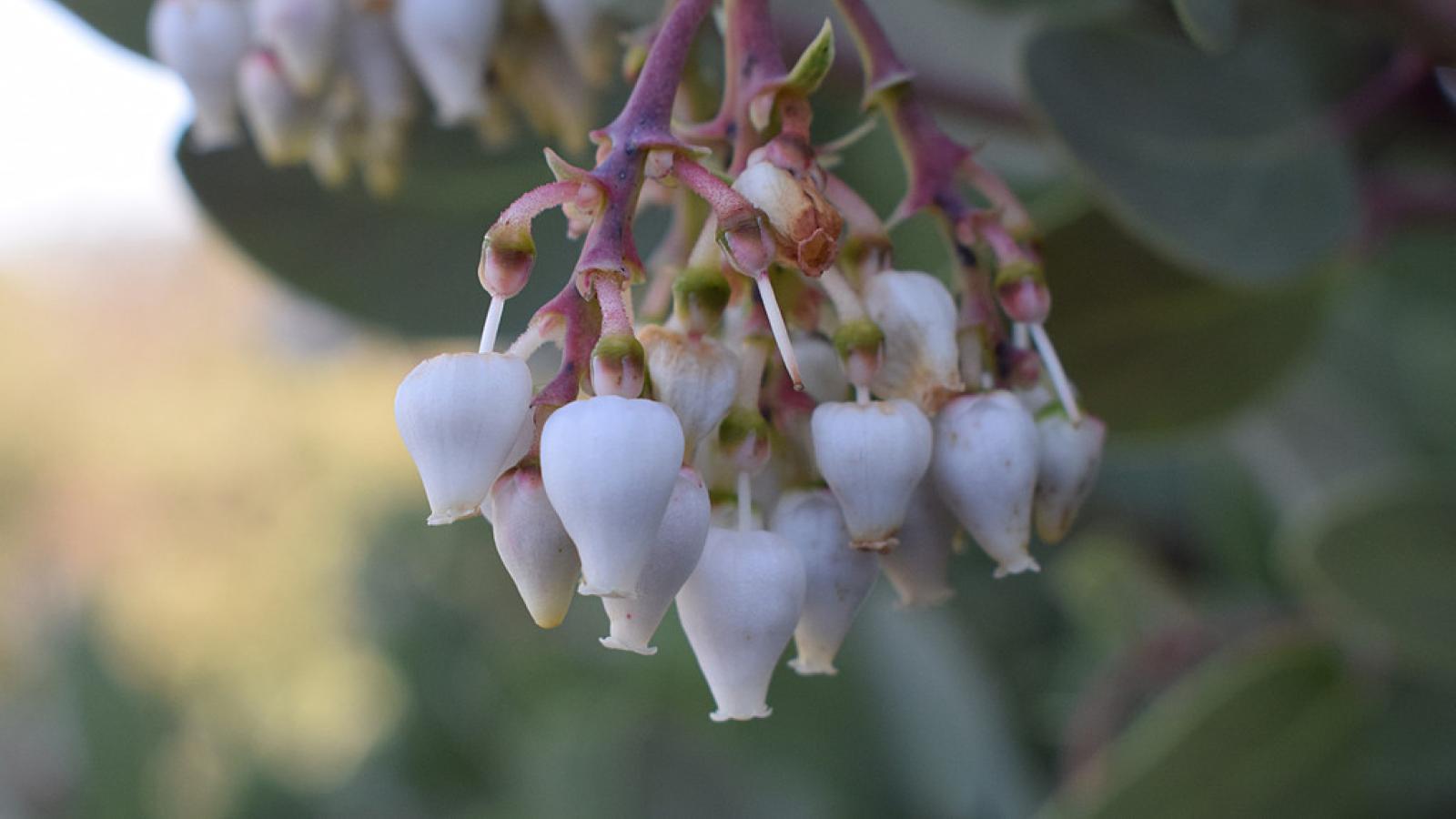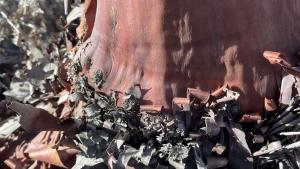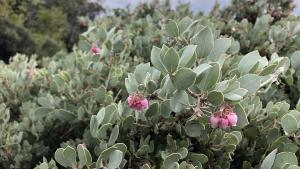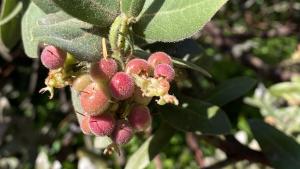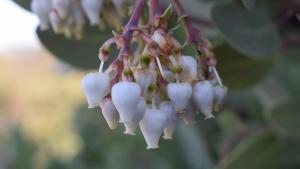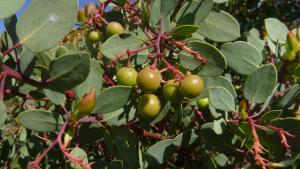The San Francisco Bay Area supports a diverse array of manzanitas, a group of flowering plants in the Ericaceae family whose members include madrone, holly, blueberry and rhododendron. Manzanitas and madrones are easily spotted due to their distinctive red, peeling bark. Translated from Spanish, manzanita means “little apple,” which refers to the small, sweet fruits born from urn-shaped flowers.
The berries are a staple winter food source for many animals, including migrating birds, gray foxes and the endangered Santa Cruz kangaroo rat, who cache the berries in shallow underground burrows. These plants are a welcome sight come winter when the drooping white flowers and distinct red branches dot the chaparral hillsides. A number of species grow locally and can be found in Midpen preserves, including the following:
These four species, like many of their close relatives, are endemic to the California Floristic Province, a region that spans the political boundaries of the state and reaches into southern Oregon and parts of Baja California, Mexico. Arctostaphylos species and subspecies have enjoyed robust speciation in this area, with nearly all 105 manzanita species being endemic to California. The relative ease with which manzanitas can hybridize contributed to their successful establishment and produced a multitude of growth types, they can be found as a low-lying shrub or 15-foot tree and developed unique adaptations to wildfire.
Certain species produce seeds that lay dormant in the soil and are reliant on heat for germination. Other manzanitas evolved root burls, also called root crowns, which protrude from the base of the plant at the soil line. Following a wildfire, the energy stored within the burl kickstarts regeneration and the plant will resprout.
Manzanitas have also benefited from a mutualism with ericoid mycorrhizae, a unique, underground relationship between fungi and members of the Ericaceae family that has allowed the plants species to thrive in nutrient poor soils.
Although keenly adapted to California’s climate, soil, hydrologic and fire cycles, many manzanita species are now threatened. Midpen’s preservation and restoration work aims to protect these populations in perpetuity.
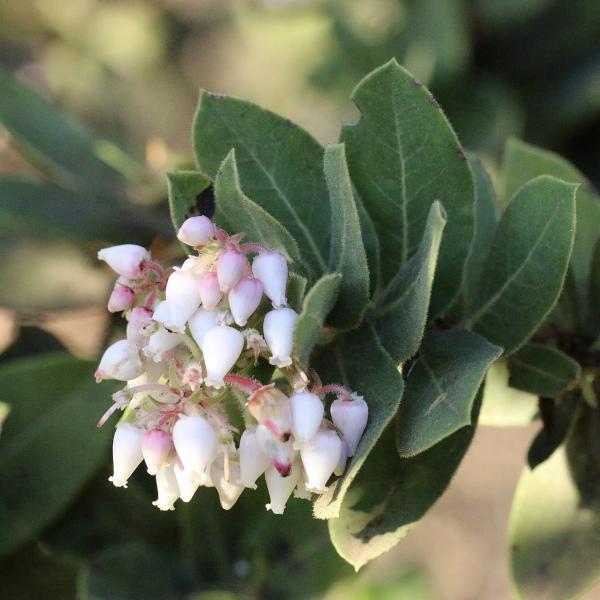
Rare Species Spotlight
The only place in the world that the Kings Mountain manzanita (Arctostaphylos regismontana) is known to exist is along the northern slopes of the Santa Cruz Mountains, where it grows within granite and sandstone soils. At maturity, this shrub can reach two to four meters in height and supports dense foliage with oval-shaped leaves. The red berries of this species are notably hairy and sticky with resin. Listed as moderately rare or endangered by the California Native Plant Society, this species persists in several Midpen preserves in the Skyline region.

